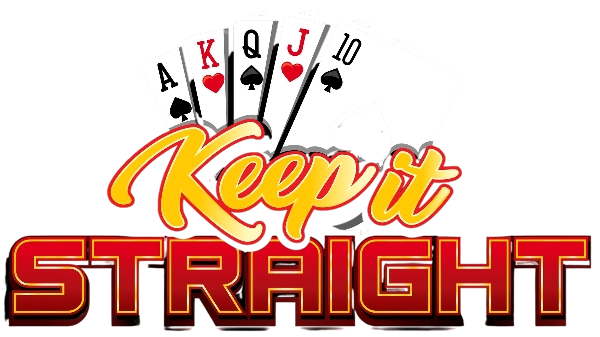Whether you’re brand new to poker or brushing up your knowledge, one question often arises: How many cards are in a straight in poker? The answer is simple — a straight always consists of five consecutive cards. But understanding why and how that works within the game is essential for improving your poker hand evaluation skills.
What Is a Straight in Poker?
In standard poker rules, a straight is a five-card hand where the cards form a numerical sequence. For example:
6 7 8 9 10
This is a valid straight because all cards are in consecutive order. The suits don’t matter in this case — what matters is that the values are sequential. Straights rank above three of a kind and below flushes in most poker variants, including Texas Hold’em and Omaha.
To learn more about hand rankings, see this CardPlayer poker hand rankings guide.
So, How Many Cards Are in a Straight in Poker?
The official rule is clear: a straight must consist of exactly five cards.
Even if you hold six or seven cards in a game like Texas Hold’em, only the best five-card combination is considered for hand evaluation. That means four-card sequences don’t count, and six-card combinations don’t strengthen a straight — you can only use the top five cards in order.
Examples:
- 5 6 7 8 9 – Valid 5-card straight
- 5 6 7 8 – Only 4 cards, not a straight
- 10 J Q K A – High straight, also known as “Broadway”
Many players make the mistake of over-counting cards in a multi-card game. For example, holding 6-7-8-9-10-J may seem powerful, but only the top five-card straight will be used to evaluate your hand.
Understanding Poker Hand Size
Poker hand size refers to the number of cards used to determine a hand’s value. In traditional games, including Texas Hold’em, Omaha, and 5-Card Draw, hands are always made up of the best five cards available to a player.
This applies whether you have:
- 2 private cards + 5 community cards (Hold’em)
- 4 hole cards + 5 community cards (Omaha)
- 5 cards total (Draw Poker)
Even if you’re dealt more than five cards, the final hand that counts will only include the best five. So again, when we ask, “a straight in poker is how many cards?” — the answer is always five.
How the Ace Works in a Straight
The Ace (A) in poker can serve as either the highest or lowest card in a straight, but not both at the same time. Here are the valid combinations:
- Low Straight: A-2-3-4-5 → called a “wheel”
- High Straight: 10-J-Q-K-A → called “Broadway”
Invalid Example: Q-K-A-2-3 — this is not a straight because the Ace cannot wrap around in both directions.
Understanding how the Ace works is key when evaluating draw possibilities or making betting decisions based on potential straight hands.
How Straights Compare to Other Hands
Here’s a quick snapshot of where the straight fits into the poker hand rankings:
- Royal Flush
- Straight Flush
- Four of a Kind
- Full House
- Flush
- Straight
- Three of a Kind
- Two Pair
- One Pair
- High Card
It’s important to know this ranking so you don’t overplay a straight against a potential flush or full house. While a straight is strong, it’s vulnerable to higher hands — especially in community card games where others may be building even better combinations.
Common Mistakes to Avoid
When trying to form a straight, beginners often run into a few common errors. Here are the top ones to watch for:
- Using only 4 cards – not enough to qualify
- Incorrect Ace placement – can’t wrap around
- Wrong assumption that suits must match – they don’t for a straight
Being aware of these missteps can save you from misreading your hand or misjudging your opponents’ moves. In online poker especially, where play is fast-paced, recognizing hand structure quickly is vital.
Conclusion: Know the Hand, Play It Smart
To summarize, when someone asks, “How many cards are in a straight in poker?” — the definitive answer is always five. Whether it’s a basic straight or part of a straight flush, the poker rules are built around five-card hand evaluations.
Key takeaways:
- A straight = five sequential cards
- Suits don’t matter in a regular straight
- The Ace can be high or low, but not both
- Hand size matters — use only the best five cards
Mastering poker straight rules not only builds your foundation as a player but also helps you make smarter betting decisions. The better you understand hand structure, the stronger you’ll play at any table — live or online.
Want to improve your game even further? Check out this helpful hand evaluation guide from PokerStrategy.




